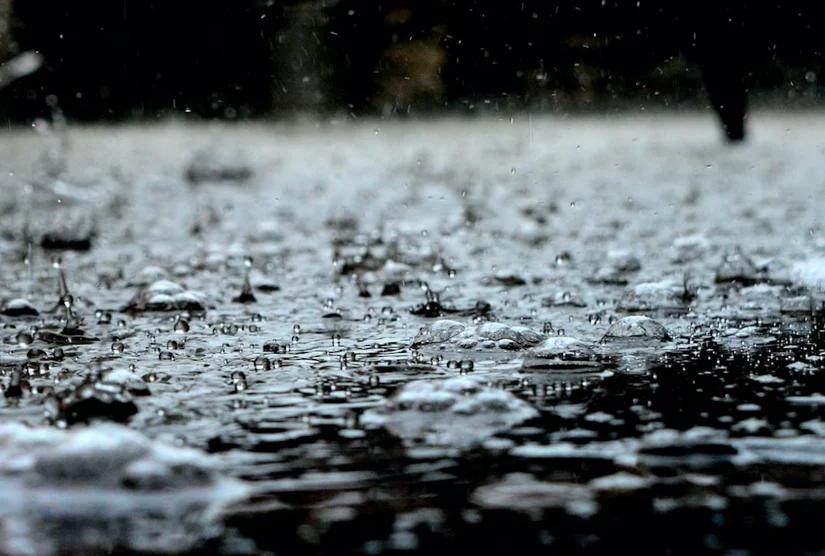Getting Started with Rain Harvesting


If you’re seeking to live off the land, then you want to utilize everything you can—including the rain!
“Rain harvesting” isn’t a new concept. Humans have been collecting rainwater for thousands of years. Rainwater harvesting systems collect storm water runoff and store it for use in irrigation, flushing toilets, washing clothes, and more.
How Does Rainwater Harvesting Work?
Rainwater harvesting is actually quite straightforward. Rainwater can be collected from the roof and redirected to a cistern. The system can be as simple or complex as you like, but it basically all comes down to plumbing. There are two basic types of rainwater collection systems—those where the water runs by gravity into a cistern and those where water runs by gravity into a surge/pump tank and is pumped into the cistern.
A gravity flow to the cistern is ideal because it doesn’t require power. Gravity flow to a surge tank and pumping to the cistern is a viable alternative when there is a backup battery or generator-powered energy system.
There are seven steps to harvesting rainwater:
- Limit your sources of contamination by making sure your roof surface materials are suitable for collecting appropriate quality water. Trim overhanging vegetation, and install gutter mesh to prevent leaves and debris from blocking gutters and pipes.
- Consider your annual rainfall, seasonality, roof surface area, and rainwater needs. Use a filter to minimize water loss and a high-level tank overflow to boost storage volume.
- First-flush diverters will keep the most contaminated rainwater out of your rainwater tank.
- Use a tank screen and insect-proof screens to keep out leaves, mosquitoes, and animals. Install an air gap to prevent stormwater backflow.
- Use a wet-dry valve or first-flush in-ground inverter to drain your pipes between rain events. Install a solar shield to block sunlight and prevent algae growth.
- Use an appropriate rainwater filter after pumping to reduce sediment, color, and odor.
- Install a tank gauge to regularly monitor water level and usage.
What Do I Need?
If you are planning to build a rainwater harvesting system, there are some basic components that you will need to make sure your system has, including:
An Appropriate Roof
Your roof should be made from non-toxic and non-leaching materials. Avoid contamination sources such as lead flashings around skylights or plumbing vents.
Gutters
Gutters should also be made from non-toxic and non-leaching materials. The most common gutters are continuous, baked aluminum that are made and installed on site. Half-round vinyl is also excellent.
Gutter Guard
Your need for a gutter guard depends on the landscape and the number and type of shedding trees in the area.
Downspouts
Anything from rain chains to traditional aluminum downspouts can be used to get water down from the gutters. Sealed PVC piping is often used close to the ground and where water needs to be transported horizontally.
Debris Traps
A series of debris traps and filters are necessary to clean the water as much as possible before it enters storage. A series of leaf and debris traps should be used to capture the leaves, needles, and berries and pipe “pigtails” collect heavier debris.
Final Sediment Filtration
Water should be passed through some form of fine mesh screen filter as a final cleaning before entering the storage tank or cistern. These filters can significantly improve water quality and reduce the need for cistern cleaning.
First-Flush Diverter
The diverter routes water from the catchment surface away from the storage tank. Diverters are typically designed to fill with contaminated water and empty themselves over 24 hours so they’re ready for more rain.
Surge/Pump Tank
Where it is not possible or desirable for the roof water to run by gravity to a cistern, it is directed to a surge/pump tank and pumped to a cistern. Tank sizing depends on the roof size, pump size, and desired storage capacity if/when power fails.
Water Storage
The heart of a rainwater system takes many forms. Most storage tanks are above-ground, molded polyethylene tanks that hold from 300 to 3,000 gallons.
Water Disinfection
Treating rainwater is often simpler than treating water from wells or surface streams. Rainwater for indoor use requires a filtration and disinfection system to remove parasites, bacteria, and viruses from bird droppings as well as insects and windblown materials that are carried onto the roof.
Special Note If You’re Planning to Drink Harvested Rainwater
Although rainwater is a clean water source, the collection and storage process often leaves water polluted and non-potable. Rainwater harvested from roofs can contain feces, mosses, lichens, windblown dust, pollution particulates, pesticides, inorganic ions, and dissolved gases. Improve water quality by using a floating draw-off mechanism (rather than drawing from the base of the tank) and by using a series of tanks, taking water from the last tank. Prefiltration is a common practice used to keep the system healthy and ensure that water entering the tank is free of large sediments.
Digital tools can help make the process even easier. Use an online interactive tool to create rainwater harvesting GIS maps. Utilizing tools like this before committing to build a rainwater harvesting system can help save time and money in addition to making the project more sustainable.
For more information on sustainable living topics, subscribe to AcreageLife today.
Tags:Garden & Landscape

Acreage Life is part of the Catalyst Communications Network publication family.
















